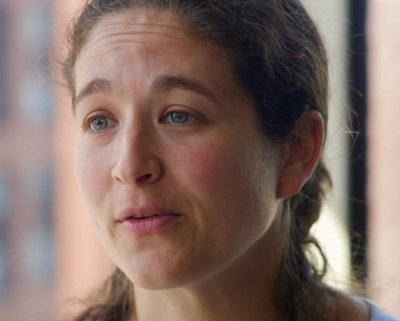 A research lab led by Elsa Olivetti of the Massachusetts Institute of Technology (MIT) (Cambridge, Massachusetts, USA) is looking into methods of converting the industrial waste produced by the manufacturing industry into building materials, in much the same way that fly ash from burning coal is used as a substitute for fresh cement in concrete.
A research lab led by Elsa Olivetti of the Massachusetts Institute of Technology (MIT) (Cambridge, Massachusetts, USA) is looking into methods of converting the industrial waste produced by the manufacturing industry into building materials, in much the same way that fly ash from burning coal is used as a substitute for fresh cement in concrete.
An associate professor in the MIT Department of Materials Science and Engineering, Olivetti first became interested in materials science while a student at the University of Virginia (Charlottesville, Virginia, USA). Years later, Olivetti participated in a MIT project in Muzaffarnagar, India, that experimented with repurposing industrial byproducts. The MIT team observed that the area’s pulp plants were powered by sugar cane and rice husks. When these materials were burned, they produced “biomass ash”—an industrial byproduct with a “pretty high, fairly reactive silica content” that’s able to bind with other materials to create a strong, cement-like structure.
The team demonstrated that the biomass ash could be utilized as a cheap building material with economic and environmental benefits. In 2015, the end result of this ash was branded by MIT as Eco-BLAC bricks. For her efforts, Olivetti received an Environmental Solutions Initiative (ESI) seed grant in 2017, which she then used to continue her research into biomass ash and other materials back at MIT.
Classifying her current work as “beyond India, beyond ash,” Olivetti is particularly interested in materials where “there’s still enough quantity to make it useful, but they aren’t already well-utilized.” This inevitably drew her to the world of metal waste materials. Among the primary questions she asks when assessing any metal waste product: is the material is reactive and, if so, to what degree? What will it react with, and under what conditions? And can it bind with other materials?
Once she has answered these questions, Olivetti examines the material’s durability in the environment where it will be used. To do this, she “synthesizes waste,” a process in which she artificially manufacturers waste products in order to determine how much waste is produced and how to best separate it into useable materials.
“I think overall what this field needs is better cataloging of what wastes are going to be where, and trying to project that a little bit,” says Olivetti. “If it’s a raw material for making something, you need to know that supply’s going to be steady.”
To that end, Olivetti is involved in a project that uses artificial intelligence to extract information about how various materials are made and to gain a better understanding of the manufacturing process. She also hopes to increase her understanding of the environmental impact of using waste materials in order to increase efficiency and sustainability.
Source: MIT News, www.news.mit.edu.